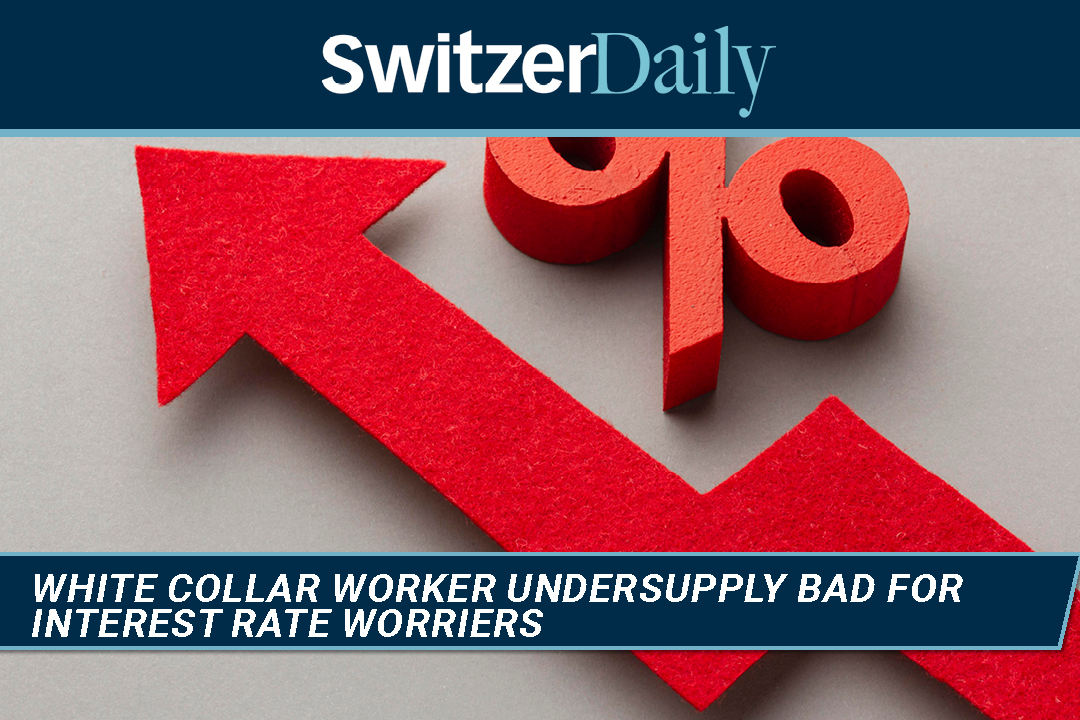

Employers have been struggling to find workers and the biggest challenge has been in the white-collar sector, where 50% of professions are suffering a gross undersupply of potential workers. This is great news for employees looking for wage rises but bad news for anyone hoping that the Reserve Bank is done and dusted with its rate rise torture for anyone with a home loan.
This comes as the US recently has seen bond yields rise quickly, which is being interpreted that the Federal Reserve is unhappy about the strength of the labour market, meaning wage pressures will keep inflation high. That means the Yanks could see another rate rise in November, which explains why stock prices have been falling on Wall Street and then here as well.
By the way, overnight, the US got weaker-than-expected jobs data and yep, stocks stopped falling and actually rose! The positive moves follow the release of new jobs data from ADP, which said 89,000 private payrolls were added last month, which is well below a Dow Jones economist’s forecast of 160,000.
With the official US jobs report out on Friday night our time, understand this: if the numbers suggest that previous rate rises are working to cool down a hot labour market, stock prices will rise on the expectation that rate rises could be over. However, if the readings say the labour market remains too hot for the Fed to handle, stock prices will resume falling.
Armed with this understanding, this news about Australian bosses finding it hard to fill white collar positions is a sign that our jobs market is too hot, meaning employers will have to raise wages to attract workers. This is bad for inflation and then future interest rate movements.
Let’s drill on the main points from a story in the AFR today. Here goes:
But there is potentially some good news for inflation and interest rate worriers.
The AFR says that Robert Half director Andrew Brushfield reports that “skill shortages in accounting, technology and office administration roles had eased since the height of the worker squeeze last year.”
Meanwhile, Jobs and Skills Australia, which runs the job vacancy report where these numbers come from, indicates that recently there has been some cooling in the ‘too hot’ labour market. Job opening numbers have fallen 8.9% between May and August 2023.
“Data over more recent months has suggested slight improvements in both fill rates and the number of applicants per vacancy, suggesting that the period captured over the 2023 assessment period was essentially a ‘peak’ in labour market tightness,” the JSA report reveals.
The bottom line is that interest rate rises have been slow to have a full impact because many borrowers were on low fixed-rate home loans. This has meant those borrowers weren’t changing their spending habits, which would’ve kept demand for goods and services higher than if all borrowers had been on variable rate loans.
As a consequence of the pandemic period, when fixed rate loans fell to record low levels, the number of these loans rocketed up to 40%, when usually they were 15%. This weakened the impact of the Reserve Bank’s interest rate policy and partly explain why we have job shortages and potential wage rise problems, which could hit inflation and interest rates.
The only potential positive is that many borrowers have now moved on to higher variable rate loans, which could curtail spending, demand for goods and services, as well as the need by employers for more workers.
Economics is a zero-sum game — for there to be winners, say home loan borrowers to get interest rate cuts in 2024, then workers will have to start losing their jobs, seeing less new jobs around and wage rises dissipate.
If this cooling of the jobs market doesn’t happen, then interest rate worriers have plenty to worry about.